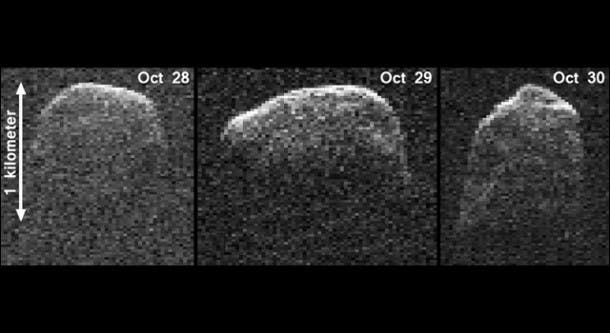Between Oct. 28 and Oct. 30, NASA‘s Deep Space Network antenna in California was directed on “2007 PA8“, a one mile wide asteroid. In these few days the asteroid came the closest it will ever get to Earth in 200 years, which was still a few million miles away. Nevertheless, NASA released composite images of the radar survey, allowing us to get closer to the asteroid on our own term.

The asteroid’s distance from Earth on Oct. 28 was 6.5 million miles (10 million kilometers). The asteroid’s distance to Earth was 5.6 million miles (9 million kilometers) on Oct. 30. The perspective in the images is analogous to seeing the asteroid from above its north pole. Each of the three images is shown at the same scale. (c) NASA
On Nov. 5, the asteroid came even closer to our planet — 4 million miles, or about 17 times the distance between the Earth and the moon.
via JPL NASA









